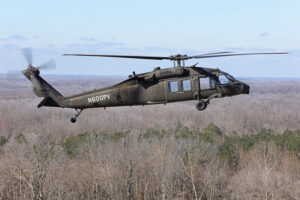
DARPA and Lockheed Martin’s [LMT] Sikorsky announced Tuesday they have completed the first ever completely unmanned, autonomous flight with a UH-60 Black Hawk helicopter. The UH-60A flew with no safety pilots onboard during a pair of recent demonstrations as part of DARPA’s Aircrew Labor In-Cockpit Automation System (ALIAS) program, which the Army has expressed interest in potentially leveraging the technology for its enduring fleet. “Sikorsky’s advancements in flight automation and autonomy will be game-changers for Army aviators and ground commanders,…

 By
By 








